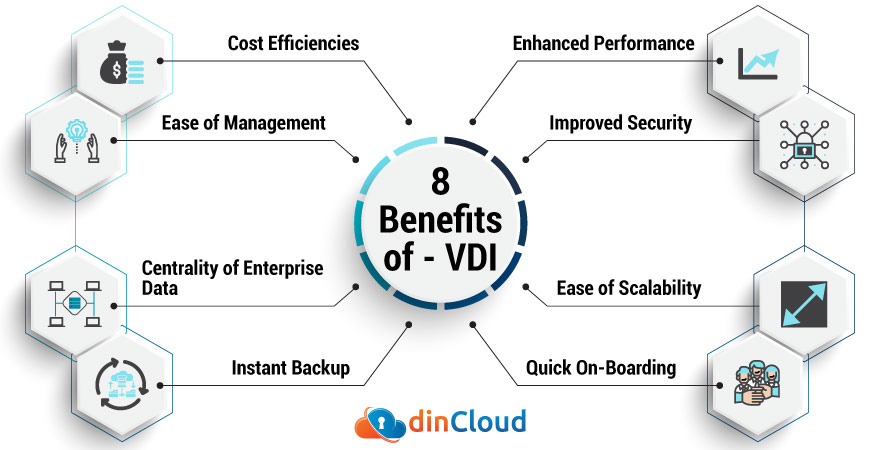The technology of desktop virtualization has transformed the IT infrastructures of thousands of enterprises across the globe. Desktop virtualization, whether done on premise or via a third party Cloud Service Provider (CSP), entails long term benefits.

In this post, we will focus on the benefits of Virtual Desktop Infrastructure (VDI) and towards the end, suggest a desktop virtualization technology that’s even better than VDI in terms of cost reduction and ease of management.
What is Virtual Desktop Infrastructure (VDI)?
Instead of procuring physical desktop computers, you create virtualized instances of desktops over your on premise data center. Employees can access these Virtual Machines (VMs) from the workplace or their homes, at a time and device of their liking.
Also Read: List of 7 Best Desktop as a Service DaaS Providers 2020
Benefits of VDI
Despite the upfront cost of setting up an on premise data center, VDI brings along a lot of benefits for the deploying entity. Let’s discuss a few major ones.
Cost Efficiencies
When you have switched over to VDI, you are utilizing the storage and capacity of your data center instead of individual devices. By doing so, you can extend the lifespan of your otherwise obsolete IT hardware and avoid constant upgrades.
Ease of Management
In VDI, any changes you perform to the delivery stack such as updates, patches or new applications have to be done centrally. The effect is passed on to all your VMs due to centralized management. You don’t have to upgrade each physical device in VDI.
Also Read: Why DaaS (Desktop as a Service) ?
Centrality of Enterprise Data
In VDI, all your enterprise data is stored centrally over data center(s) instead of employee devices. This improves data privacy and security. Even if an individual device is lost or malfunctions, you don’t risk losing any critical data in the process.
Instant Backup
In VDI, your enterprise data is converged at a single data center. To further protect this data, constant backups of this data are maintained at physically dispersed locations. In case of any contingency, data can be restored immediately due to a robust backup mechanism.
Also Read: Desktop as a Service – 4 Reasons Why Organizations Embrace DaaS
Enhanced Performance
To support VDI, state of the art data centers are set up, which is a one time long term expense. As all the “heavy lifting” is done by your data center, your employees enjoy unrivalled performance that’s not possible for individual endpoint devices.
Improved Security
Due to centralized data in VDI, it becomes easier for you to implement enterprise grade security protocols. These include but are not limited to user authentication, encryption, intrusion detection and prevention, malware and ransomware protection.
Ease of Scalability
As opposed to the traditional IT model where you need to increase hardware in order to scale, VDI allows you to instantly scale up or down. All you have to do is increase or decrease the number of Virtual Machines (VM) as per changing needs.
Also Read: 5 Ways Desktop-as-a-Service (DaaS) Can Help Your Small Business (SMB) Succeed
Quick On-Boarding
With VDI, on boarding new employees is a breeze. Even if your employee is in another city or country, access to enterprise data and applications can instantly be granted. This improves organizational efficiency and agility.
Also Read: 10 Compelling Reasons to Deploy Desktop as a Service – DaaS
Conclusion
Apart from the downside of upfront investment, VDI has many benefits to offer. However, Desktop as a Service or DaaS is an even better alternative to VDI. In DaaS, you enjoy all the benefits of VDI, with the added benefit of not managing any hardware resources.
In DaaS, all this is done by a third party Cloud Service Provider (CSP) like dinCloud. The great bit is, you pay only for the resources you actually use. You can Contact Us for any queries you may have about our class leading DaaS solutions.


